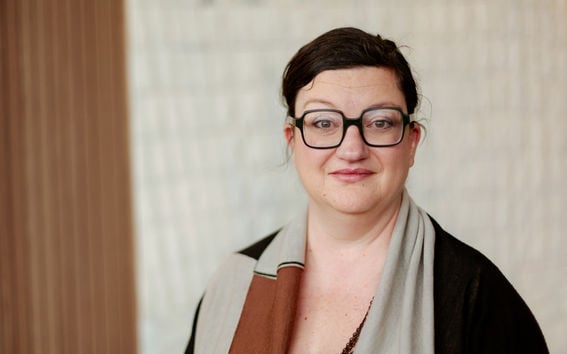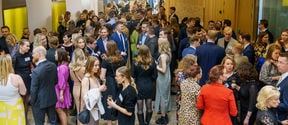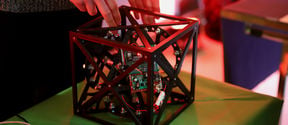'My goal is to educate designers who can work at the highest levels of government'

'Design as a profession has its roots in the Industrial Revolution, serving industry and the mass market', says Mazé. 'I'm interested in what comes next for design.'
Mazé is Professor of New Frontiers in Design at Aalto University, where she runs one of the world's leading courses in Design for Government. Born and raised in the United States, she completed a degree in architecture at Columbia University before studying at London's Royal College of Art. Mazé then moved to Sweden, where she worked in a range of design and leadership roles in research institutes and universities, before coming to Finland in 2015.
'For many years, I've been studying how design crosses over into the societal context', says Mazé. 'I've looked at the role of design in an activist context, in representing underserved communities, and in grassroots organizations.'
'Now, I believe the new frontier in design is to work with governments; to make policy design more collaborative and closer to the people.''
Professor Ramia MazéOne of the main challenges when design moves into the public sector is that it needs to consider all citizens.”
Citizen-centric design
At the core of the Design for Government course that Mazé teaches are real projects commissioned by Finland's ministries and public authorities. Students tackle these projects from day one of the course, which also includes tuition in service design, behavioral and organizational change, ethics, and political theory.
While Finland has one of the world's highest levels of trust between a government and its citizens, this trust has been eroding in recent years. In response, the Finnish government is looking for ways to make governance more interactive, and enable citizens to play a more central role in planning public policy and services. This is where Mazé's students come in.
'One of the main challenges when design moves into the public sector is that it's not just serving the market consumer – who represents a narrow and typically affluent part of the population – but it needs to consider all citizens', says Mazé. 'Public service means considering diverse abilities and ages, many socio-economic conditions, and even future generations. It's a very different idea about whose interests we serve as designers.'
In addition to the Design for Government course, which collaborates with Finland's ministries, the Design for Services course, led by Professor Tuuli Mattelmäki, works with the country's local municipalities. Aalto University's design education, knowledge and impact thus span two parts of the public sector with very different ways of thinking about design.
"Service design is widely practiced in the municipalities of the greater Helsinki region, but design has only recently entered at the state level of governance. It's already making a big impact though," says Mazé.
"Design at the municipal level is much closer to the citizens, simply because of physical proximity. But design in ministries is often much further removed from the people – geographically, culturally and socio-economically. The design challenge is to find ways to bridge this gap."
Helping civil servants
One of the Design for Government briefs, called ‘Civil Servant 2.0’, asked students to study new ways in which Finnish civil servants could work together. Multiple ministries had seen the drawbacks of working in siloes, and they came together to do something about it.
"Despite the desire to be more citizen-centric, civil servants often work in a context that structurally and culturally inhibits them from doing what they think needs to be done," says Mazé. “Collaborating with universities brings a fresh perspective and new tools.”
After several weeks of research, Mazé's students proposed and designed an education program with a peer-learning component and a match-making tool that paired civil servants up with one another. The proposal also included a roadmap for integrating these within the ministries' hiring and promotion practices.
One of this year’s briefs from Finland's Ministry of Finance asks students to help in defining the role of Artificial Intelligence in making government services more efficient and human-centered. The project – which looks at the design of public services from the perspective of life events like marriage, family and retirement – will form part of Finland's European Union presidency period that begins on July 1st, 2019.
Ramia MazéStudents come to Aalto just for this course, and because Finland is a leader in design for the public sector."
From waste handling, to waste prevention
In another project, Finland's Ministry of the Environment asked Mazé's students to look at the waste stream generated by consumer electronics, and to design a new plan to address it. When one of the groups – comprising students with backgrounds in future studies, business and design – began looking at the European Union waste policy, they realized the emphasis was on handling electronic waste. There was very little about preventing it in the first place.
With this insight, the group analyzed the prioritization of waste and proposed a plan for Finland that focused on upstream prevention rather than downstream handling. Instead of a waste plan, they designed a prevention-focused upkeep plan, complete with labelling schemes, new service models and community initiatives. They brought the plan to life with a human-centric approach through the point of view of someone buying a new washing machine.
'Students come to Aalto just for this course, and because Finland is a leader in design for the public sector', says Mazé. 'We've had students from 43 different countries bringing fresh thinking to Finland's public authorities.'
"The course expands the notion of design, thinking of it as a series of mind-sets and methods that many people can learn," she says. "The students have backgrounds in linguistics, IT management, business and more. So it's a course that also simulates what the collaborative nature of public service will need to be in the future."
"In the last few years, we've seen an explosion in the recruitment of designers in Finnish government. My goal is to educate students for these roles, bringing designers and design-minded policy makers into government at all levels – even into the prime minister's office."
***
Finland will present its exhibition Everyday Experiments at the XXII Triennale di Milano from 1 March to 1 September this year, featuring twelve experimental projects people are already doing to make their lives more sustainable and equitable. La Triennale di Milano will take place from 1 March to 1 September 2019 and is curated by Paola Antonelli, Senior Curator of Architecture and Design and Director of Research & Development at The Museum of Modern Art. Broken Nature will reflect on the relationship between humans and environments at all scales—from the microbiome to the cosmos—including social, cultural, and natural ecosystems.
Learn more about all 12 Everyday Experiments: everdayexperiments.aalto.fi
The XXII Triennale, Broken Nature: http://www.brokennature.org/
- Published:
- Updated:
Read more news

Teamwork First-Aid Kit supports students in project-based courses
This online resource offers tools to support student teams throughout project courses.
Aalto ARTS alum Vidha Samya’s artwork featured at the Venice Biennale 2024
The Pavilion of Finland presents ‘The pleasures we choose’ at the 60th International Art Exhibition – La Biennale di Venezia until 24 November 2024.
Mikkeli campus alumni celebrate the 35th anniversary of the International Business programme
More than 200 alumni of the BBA/BScBA programme attended the ceremony at the School of Business in Otaniemi.